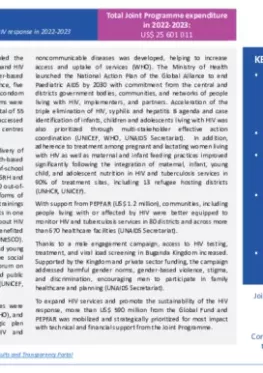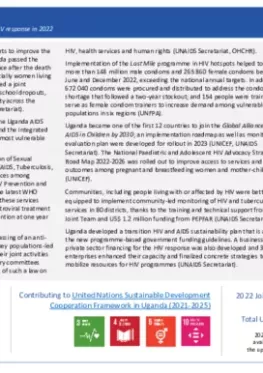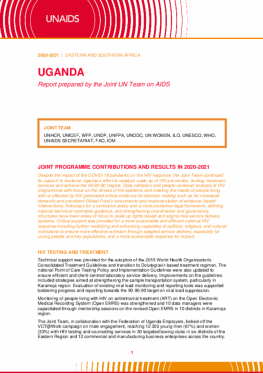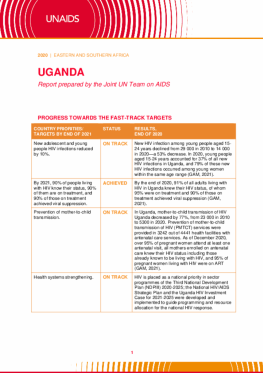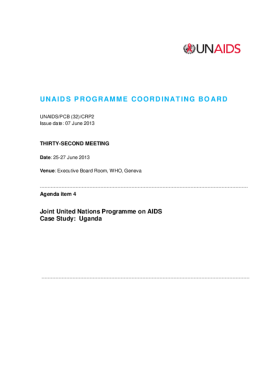|
Uganda
In Uganda, the Joint UN Programme of Support enabled the Government to implement robust national strategies to expand HIV services and education while addressing stigma and gender-based violence against vulnerable and key populations. For instance, five million adolescent and young people were reached with condom awareness and education messages; and 100 million condoms were distributed to community distribution points (UNFPA). A total of 55 000 people from the key population community also accessed specialized services through peer educators and drop-in centres (UNDP, UNFPA, UNAIDS Secretariat).
A national framework was developed to scale up the delivery of integrated SRHR information and services through faith-based institutions (UNAIDS Secretariat). A total of 200 000 out-of-school adolescents and young people also received CSE and HIV, SRH and gender-based violence services (UNICEF). In one region, 500 out-of-school adolescent girls and young women facing various forms of discrimination were supported to complete vocational trainings (UNICEF, UNFPA). More than 3000 secondary school students in one region acquired essential life skills and critical knowledge about HIV (UN Women). A total of 200 teachers and 5000 students benefited from HIV awareness and capacity building training (UNESCO). Additionally, representatives of Government, civil society and young people in Kampala received training on gender-responsive social protection programmes and the Uganda Parliamentary Forum on Social Protection on government ownership, leadership and public expenditure for national social protection mechanisms (UNICEF, UNDP).
The consolidated HIV Prevention and Treatment Guidelines were aligned with the latest WHO recommendations (UNICEF, WHO), and a new comprehensive viral hepatitis national strategic plan integrating holistic care for people living with HIV and noncommunicable diseases was developed, helping to increase access and uptake of services (WHO). The Ministry of Health launched the National Action Plan of the Global Alliance to end Paediatric AIDS by 2030 with commitment from the central and districts government bodies, communities, and networks of people living with HIV, implementers, and partners. Acceleration of the triple elimination of HIV, syphilis and hepatitis B agenda and case identification of infants, children and adolescents living with HIV was also prioritized through multi-stakeholder effective action coordination (UNICEF, WHO, UNAIDS Secretariat). In addition, adherence to treatment among pregnant and lactating women living with HIV as well as maternal and infant feeding practices improved significantly following the integration of maternal, infant, young child, and adolescent nutrition in HIV and tuberculosis services in 90% of treatment sites, including 13 refugee hosting districts (UNHCR, UNICEF).
With support from PEPFAR (US$ 1.2 million), communities, including people living with or affected by HIV were better equipped to monitor HIV and tuberculosis services in 80 districts and across more than 670 healthcare facilities (UNAIDS Secretariat).
Thanks to a male engagement campaign, access to HIV testing, treatment, and viral load screening in Buganda Kingdom increased. Supported by the Kingdom and private sector funding, the campaign addressed harmful gender norms, gender-based violence, stigma, and discrimination, encouraging men to participate in family healthcare and planning (UNAIDS Secretariat).
To expand HIV services and promote the sustainability of the HIV response, more than US$ 590 million from the Global Fund and PEPFAR was mobilized and strategically prioritized for most impact with technical and financial support from the Joint Programme.


